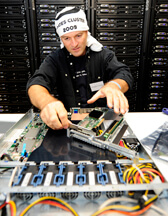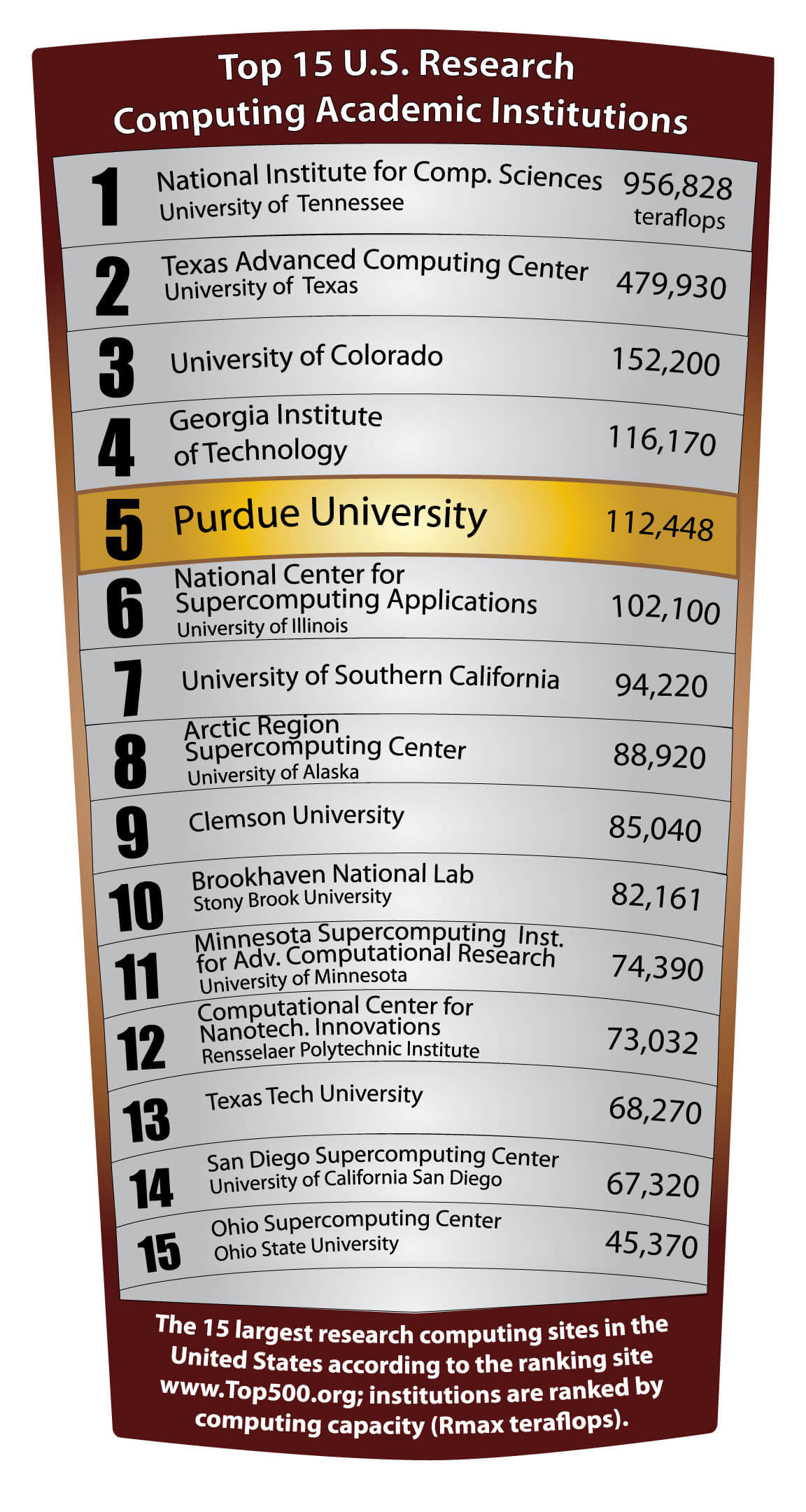Purdue computing resources rank near top nationally

Douglas Couch, information technology security engineer, installs a 10-gigabit network card into a computer processor during the installation of Purdue's Coates supercomputer in 2009. A recent ranking of the largest supercomputers in the world -- performed biannually by www.Top500.org -- listed two Purdue supercomputers, Rossmann and Coates, as being in the world's top 150 largest machines. (Purdue University photo/Andrew Hancock)
In modern science and engineering, as in college football, sometimes the bigger your lineup, the more you win.
Winning in research -- making discoveries -- requires massive amounts of computing capacity. In this area, Purdue has one of the best front lines in the nation.
A recent ranking of the largest supercomputers in the world -- performed biannually by www.Top500.org --listed two Purdue supercomputers, Rossmann and Coates, as being in the world's top 150 largest machines.
When compared with other academic research institutions in the United States, Purdue places fifth in the nation in computing capacity.
Purdue's ranking will be announced today (Dec. 8) at the Cyberinfrastructure Days conference.
Gerry McCartney, chief information officer, vice president for information technology at Purdue and the Olga Oesterle England Professor of Information Technology, says Purdue has aggressively developed computing infrastructure to meet the needs of the world-class research being done by Purdue faculty.
"Although we're pleased to be ranked so high, this is about creating the nation's best environment for science and engineering research, not about whose machine is bigger," McCartney said. "The research being done by Purdue faculty demands massive amounts of computing capacity, and we are meeting that demand."
Research computing capacity at Purdue ranked behind three centers that support faculty members nationally -- National Institute for Computational Sciences, which is located at the University of Tennessee; the Texas Advanced Computing Center, which is located at the University of Texas; and Georgia Institute of Technology, commonly known as Georgia Tech. Only one campus-based resource ranks higher -- the University of Colorado.

The 15 largest research computing sites in the United States according to the ranking site www.Top500.org; institutions are ranked by computing capacity (Rmax teraflops). (Graphic by ITaP)
"Looking at that list, Purdue stands out because our computing resources are available to campus researchers. Our faculty don't have to wait in line behind researchers from across the nation to get their work done," McCartney said. "If you narrow the list to only local resources available to campus faculty immediately, Purdue is currently leading the nation."
Purdue's Rossmann cluster supercomputer ranked 126th on the latest list, which is compiled by the international Top500 Supercomputer Sites project. Rossmann was built in September 2010. Coates, which was built in 2009, ranked 147th.
Purdue also has a third supercomputer, Steele, built in 2008, which fell just outside of the top 500 and was not used in this ranking. Steele ranked as the 105th largest supercomputer in the world in 2008.
The supercomputers are operated by the Rosen Center for Advanced Computing, a division of Information Technology at Purdue, known on campus as ITaP (pronounced EYE-tap).
Since 2008, Purdue has been funding the purchase of the supercomputer through a campus cooperative purchasing arrangement in which research faculty pool grant funds; the so-called community cluster program received an Innovators Award from Campus Technology magazine in 2010.
Purdue plans to build a fourth community cluster supercomputer in 2011, and a fifth in 2012.
"In order to remain competitive for top research grants, Purdue must continue to build the best campus environment for scientists and engineers," McCartney said. "Our faculty realize this and have worked together and with ITaP to make this a reality. This is one of the secrets of Purdue's success."
